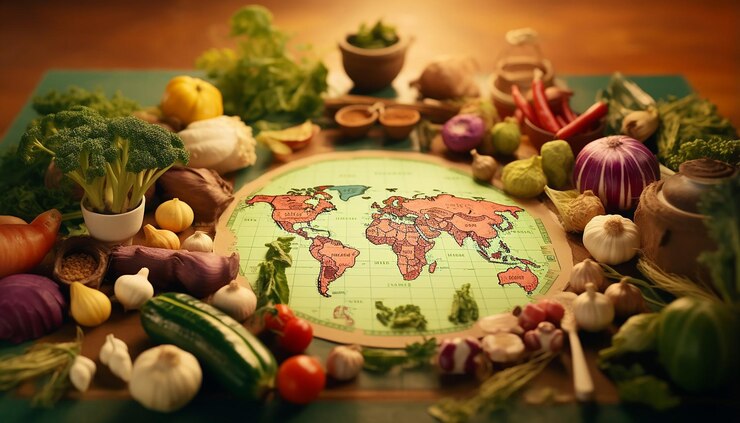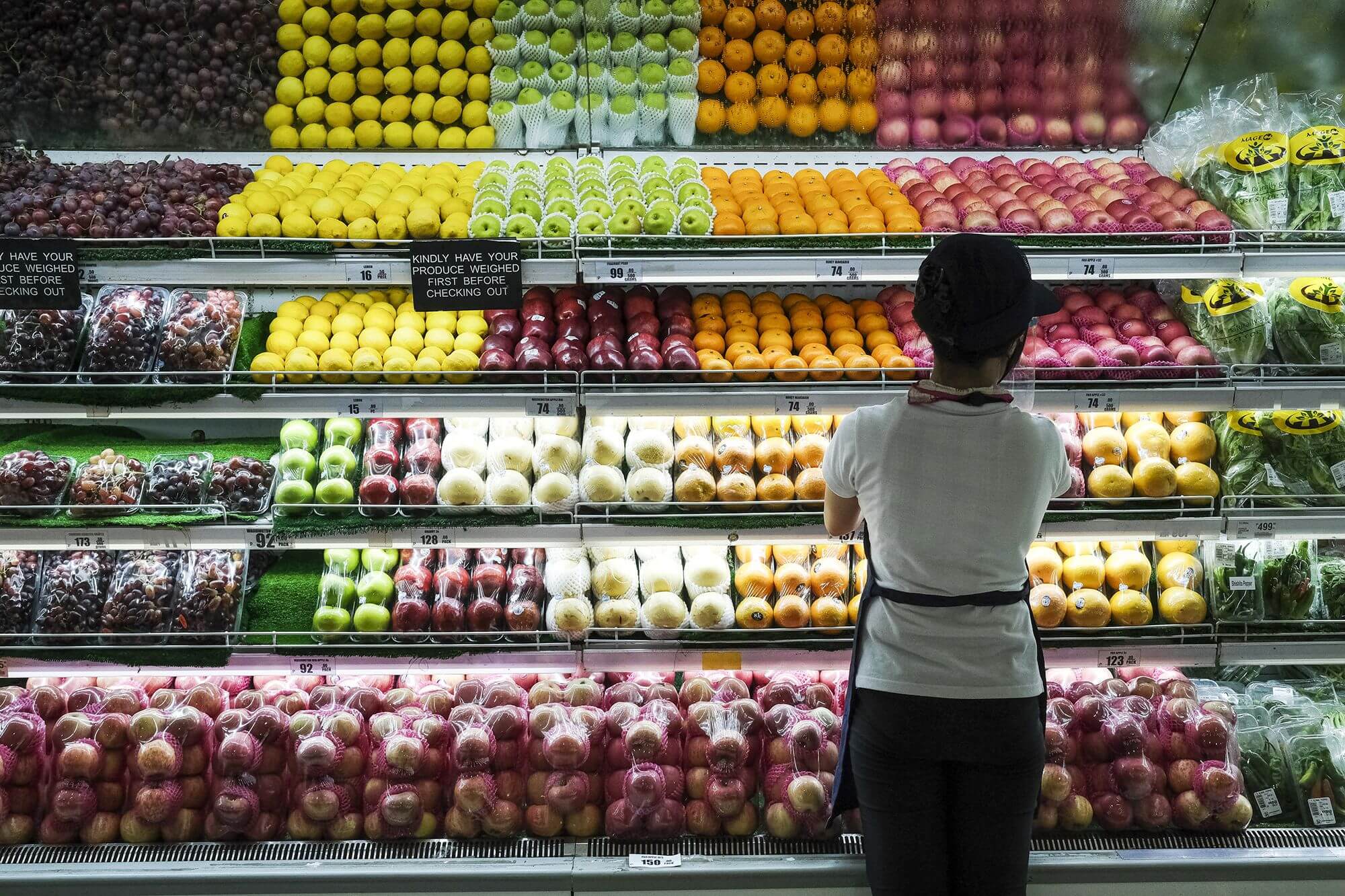The global food market is where food is grown, sold, and traded around the world. It connects farmers, food producers, traders, and consumers. This maFood isn’t produced in every country, so the global food market helps share food across borders. Some countries are big producers of rice or wheat, while others might grow fruits or vegetables. Through trade, countries can get the food they don’t have. For example, countries like Brazil and the USA are known for exporting lots of grains, whirket is huge, with billions of people buying and selling food every day. It’s more than just the food on your plate; it includes everything from the seeds in the ground to the trucks that deliver food to stores. Without this market, many countries would not be able to feed their people.le nations in Africa might rely on imports to feed their people.
The global food market is important because it helps ensure that everyone has enough food to eat. However, it also faces challenges like rising food prices and climate change. As the world’s population grows, it becomes even more critical to manage food resources wisely. This market influences not only food availability but also economic stability and social welfare across the globe.
Key Drivers Shaping the Global Food Market Today
Several important factors drive the changes in the global food market today. Economic growth, technology, and climate change are just a few examples. Countries with strong economies often have higher food demand, which increases trade in the global market. When people in these countries can afford to buy more food, it drives up prices and affects the entire system.
- Economic Growth: As countries grow wealthier, they often consume more food. This leads to more demand for food products.
- Technological Advancements: Technology has made it easier to grow and transport food, which helps meet global demand. From smart farming to better storage systems, innovations are changing how food is produced and moved.
- Climate Change: Weather patterns are shifting, causing droughts or floods. These changes affect crop yields and can lead to food shortages, influencing prices in the global market.
Overall, these factors not only affect how food is produced but also how it’s traded and priced in different parts of the world. Understanding these drivers is key to grasping how the global food market functions.
How the Global Food Market Impacts Our Daily Lives

The global food market has a direct impact on what we eat and how much we pay for it. When food prices go up, it affects families around the world. For example, if a country faces a poor harvest due to bad weather, the price of food in the stores might rise. This can lead to problems, especially for people who already struggle to afford food.
In many countries, food is imported from other places. This means that when something happens to affect food supplies in another country, it can cause a ripple effect. For example, if a major food-producing country has a poor crop, prices might increase everywhere. As a result, consumers might see higher prices at their local grocery stores, affecting their daily lives.
The global food market also influences what foods are available. With the rise of health trends, consumers are more interested in certain types of food, like organic or plant-based options. These changes in demand affect the global food trade, and businesses must adjust to provide what people want to buy.
Emerging Trends in the Global Food Market: From Plant-Based to Biofuels
The global food market is also changing because of new trends that are shaping how we think about food. One such trend is the rise of plant-based foods. As more people become aware of the environmental impact of meat production, demand for plant-based options like tofu, veggie burgers, and almond milk is growing. This is changing the way food is produced and traded globally.
- Plant-Based Foods: More people are choosing plant-based diets, which has led to a surge in the production and sale of plant-based food products. This shift is reshaping the food market.
- Biofuels: In some countries, food crops like corn and soybeans are being used to create biofuels, which can be used as an alternative energy source. This is creating competition between food and fuel markets.
- Sustainability: Consumers are increasingly looking for food that is grown in a sustainable way. This trend is pushing the food market to focus more on eco-friendly practices.
These trends are transforming the global food market by influencing both production and consumption. Companies and governments must adapt to these changes to keep up with evolving consumer preferences and environmental concerns.
The Future of the Global Food Market: Opportunities for Growth

Looking ahead, the global food market is expected to grow even more. As the world’s population continues to increase, demand for food will also rise. This presents opportunities for new businesses and innovations in food production, technology, and distribution.
- Technology Advancements: New technologies in agriculture, such as drone farming and AI-powered systems, will help farmers produce more food efficiently. This can meet the increasing demand while reducing environmental impact.
- Urban Farming: Urban farming is growing in popularity, with cities around the world exploring ways to grow food within city limits. This trend could revolutionize the food market by making fresh food more accessible.
- Health-Conscious Foods: As people become more health-conscious, the demand for nutritious and organic foods will continue to rise. This trend could lead to new market opportunities for businesses that focus on healthy food products.
The future of the global food market looks promising, with many opportunities for growth and innovation. However, careful planning and sustainable practices will be crucial to meeting the needs of the growing global population.
Conclusion
The global food market is an essential part of our everyday lives, helping to feed people all around the world. It connects farmers, food producers, and consumers, ensuring that food reaches the places where it’s needed most. While it faces many challenges like rising prices, climate change, and economic instability, it also brings new opportunities for growth and innovation. As we move forward, it’s important for countries and businesses to work together to make sure everyone has enough healthy and affordable food.
In the future, the global food market will keep changing. New technologies, trends like plant-based diets, and smarter farming methods could help create a more sustainable food system. By focusing on solutions that address hunger, waste, and environmental concerns, we can help ensure that the global food market continues to grow in a way that benefits everyone. With the right effort, we can make the food system work better for people and the planet.
FAQs
Q: What is the global food market?
A: The global food market is the worldwide system where food is grown, traded, and sold. It connects farmers, food producers, and consumers across different countries to ensure food is available around the world.
Q: How does the global food market affect food prices?
A: Food prices in the global market can change based on factors like supply and demand, weather conditions, and economic conditions. When there are food shortages or increased demand, prices tend to rise, affecting what we pay for food.
Q: What are the main drivers of the global food market today?
A: Key drivers include economic growth, technological advancements in farming, climate change, and changing consumer preferences. These factors influence how food is produced, traded, and consumed.
Q: Why is the global food market important for developing countries?
A: Many developing countries rely on the global food market to import food they can’t produce locally. It helps ensure that people in these countries have access to the food they need to survive and thrive.
Q: What are some challenges facing the global food market?
A: The global food market faces challenges such as climate change, food waste, rising prices, and economic inequality. These issues can disrupt food availability and make it harder for people, especially in poor regions, to access affordable food.




